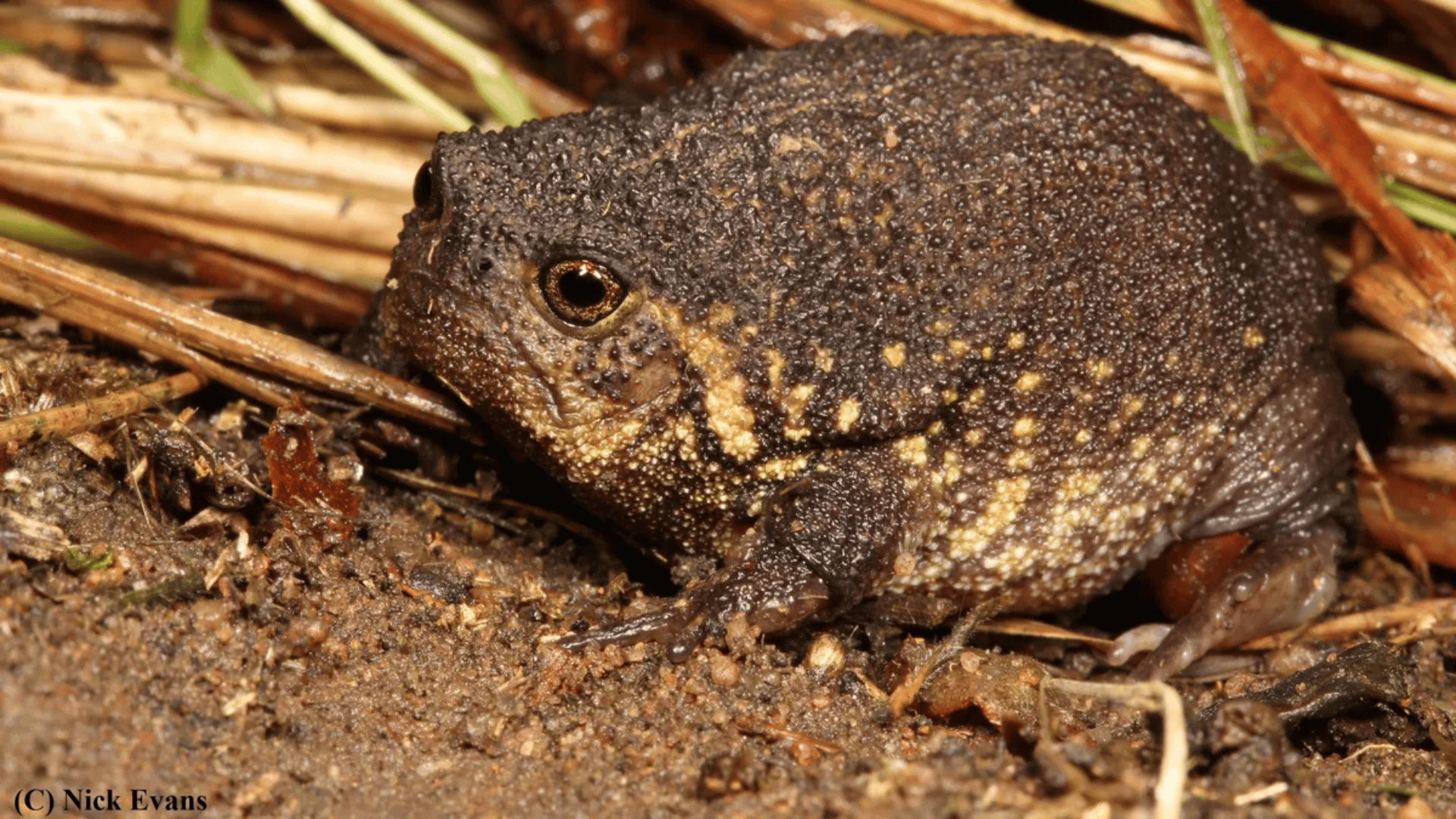Three frog enthusiasts who were attempting to document every frog in a field guide accidentally discovered a new species of South African rain frog.
South African Rain Frog

The field guide was written by herpetologist Professor Louis du Preez of the North-West University. While attempting to find a frog species called Bilbo’s rain frog (Breviceps bagginsi), the group sent a photo they believed to be this species to du Preez for confirmation.
“There was something curious,” recalled du Preez in a statement. “I thought they had mixed up the images and the sounds. But when I pointed this out, they sent a video, and that’s when I realised that we were looking at a new species.”
According to IFL Science, Du Preez and colleagues used genetic analysis and morphology to determine whether what they’d found was actually a new species. Both analyses showed marked differences between the frog and its closest relative, Breviceps verrucosus.
The new species, for example, had a visible eardrum, and its mouth was positioned differently from other species in the genus. The frog also emitted calls that were faster, shorter, and more frequent than its similar counterparts.
The frog has been named Breviceps batrachophiliorum, with the common name of the Boston rain frog.
“The species name is a plural noun in the genitive form, which means ‘frog-loving people’. It acknowledges the contributions of Marius Burger, Nick Evans, Cormac Price and Dylan Leonard, who were the first to record and ‘re-discover’ this species, James Harvey, Adrian Armstrong and Kirsty Kyle who provided additional information on this species, and the efforts of the many herpetologists and other nature-lovers who submitted data to the Southern African Frog Atlas Project (1996−2003),” explain the authors in the paper.
Researchers believe the new frog can only be found in an area just over 425 square miles. This has given scientists cause for concern since this limits the potential size of the population, and the new species could also be mistaken for the Bilbo rain frog. More studies will need to be done in order to determine the true size of both populations.
The study is published in the African Journal of Herpetology.







